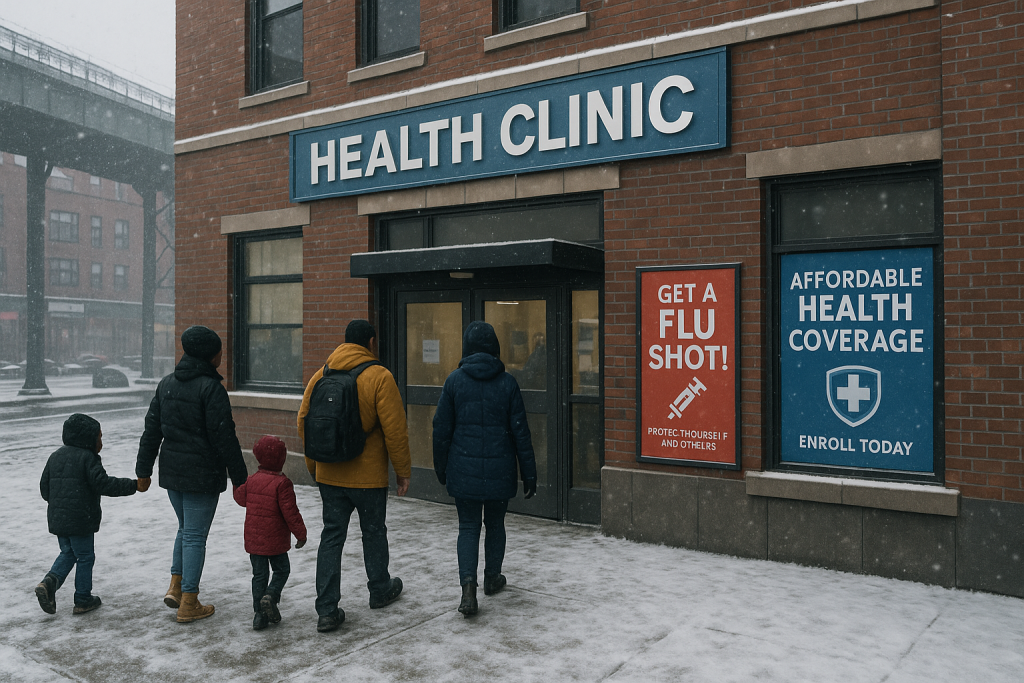If you’re a New York family trying to get support from the Office for People With Developmental Disabilities (OPWDD), you’ve probably felt frustrated. Many parents and caregivers describe the process as confusing, stressful, and painfully slow. Between complicated eligibility requirements, long wait times, and paperwork that feels endless, families often feel abandoned just when they need help most.
Table of Content
1.Why OPWDD Support Matters in New York
2.The Barriers Families Face
3.How SecureSafer Helps Families Navigate OPWDD
4.The Hidden Emotional Toll
5.How to Improve Your Chances of Success
6.Why This Problem Persists in New York
7.A Path Forward for Families
At SecureSafer, we understand how critical this support can be. While no private agency can replace state decisions, experienced brokers can guide families step by step, helping them avoid common mistakes and stay organized.
Why OPWDD Support Matters in New York
The OPWDD system provides access to vital services such as housing assistance, day programs, behavioral support, and Medicaid-funded care. For families of children or adults with intellectual and developmental disabilities, these services are often the difference between stability and constant crisis.
However, despite New York’s robust program, access is not guaranteed. Every year, thousands of families face barriers just trying to prove eligibility. According to the New York State Department of Health, Medicaid-funded programs are heavily regulated, meaning every application must meet strict documentation rules health.ny.gov.
The Barriers Families Face
1. Complicated Eligibility Evaluations
OPWDD requires families to submit psychological, medical, and educational records to prove developmental disability before age 22. Missing one document can stall the entire case.
ADVERTISEMENT
2. Long Waiting Periods
Even after eligibility is confirmed, service coordination and placement can take months—sometimes over a year. Families report waiting while juggling jobs, caregiving, and financial stress.
3. Confusing Medicaid Link
Most OPWDD services require Medicaid approval, which adds another layer of paperwork. Families often don’t realize they need to apply for Medicaid first. Resources like medicare.gov and dfs.ny.gov explain how coverage rules differ, but the system is rarely explained in plain language.
4. Lack of Guidance
Many families describe being “handed a stack of papers” with little explanation. Without professional help, it’s easy to miss deadlines or fill out forms incorrectly.
How SecureSafer Helps Families Navigate OPWDD
SecureSafer does not determine eligibility, but we help families get organized and confident. We guide them in preparing documentation, coordinating benefits, and avoiding errors that could slow down approvals.
Our approach includes:
- Explaining Medicaid requirements in plain language. Families often confuse Medicare and Medicaid; we clarify what applies for OPWDD.
- Coordinating insurance and benefits. By reviewing health coverage options, we ensure families don’t miss out on secondary support.
- Helping with follow-ups. Staying proactive prevents cases from sitting unnoticed in bureaucratic backlogs.
When families understand each step, they feel empowered—not powerless.
The Hidden Emotional Toll
Behind the paperwork, real families struggle with burnout. Parents may spend hours on calls with agencies, only to be told another form is missing. Some caregivers reduce work hours or quit jobs altogether just to handle the process.
This stress can fracture families. A mother in Queens described spending two years trying to secure day-program placement for her son. By the time services began, she was already financially drained and emotionally exhausted.
How to Improve Your Chances of Success
While no outcome can be guaranteed, certain strategies make the process smoother:
- Stay organized. Keep copies of every medical, educational, and psychological evaluation in one folder.
- Apply for Medicaid early. Since OPWDD services require it, starting this process first avoids delays.
- Request help from care managers. The New York State Health Department notes that care coordination organizations (CCOs) are available to guide families through the system health.ny.gov.
- Work with an insurance broker. A broker like SecureSafer can help align health coverage with OPWDD needs, reducing stress.
Why This Problem Persists in New York
New York has one of the largest populations of people with developmental disabilities in the country. Demand for services continues to grow, but state funding and staff availability have not kept pace. Even with reforms, the OPWDD system struggles to handle the volume of applications.
ADVERTISEMENT
This means families must prepare for delays—and seek outside guidance whenever possible.
A Path Forward for Families
Getting OPWDD support in New York is never simple, but families don’t have to face the process alone. By combining state resources with private guidance, families can stay on track, reduce stress, and secure the care their loved ones deserve.
If you or someone you know is struggling with OPWDD applications, visit SecureSafer.com to learn how our team supports New York families every step of the way.
Compliance Note
SecureSafer provides insurance and benefits guidance. We do not determine state or federal eligibility for OPWDD, Medicaid, or Medicare. Information in this article is based on resources from medicare.gov, dfs.ny.gov, and health.ny.gov. Families should always verify final eligibility requirements with official government agencies.
| Need Help Now? Don’t Wait. ✅ Call our SecureSafer team directly at SecureSafer.com or call (646) 444-2020 ✅ Request a policy review or switch evaluation today. |
ADVERTISEMENT

